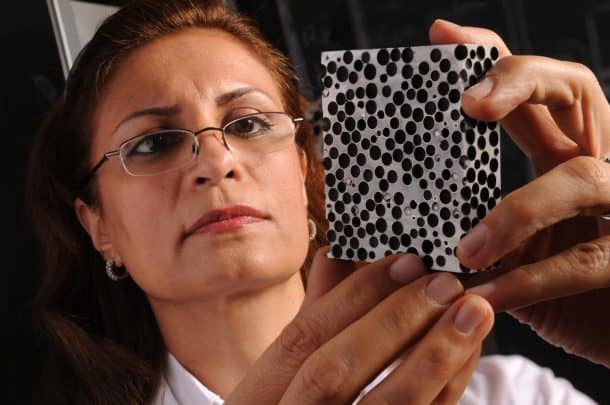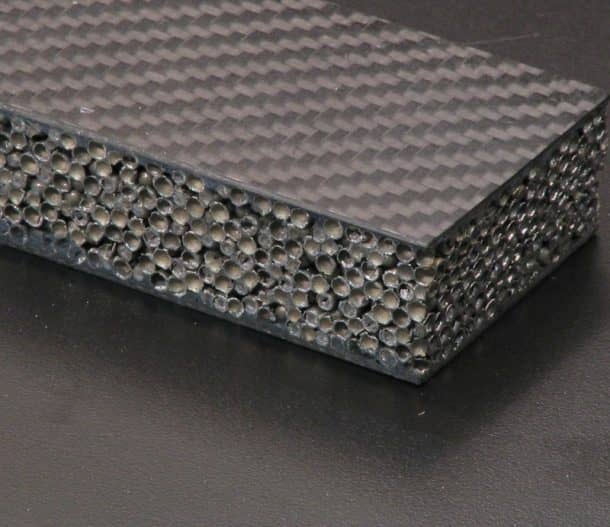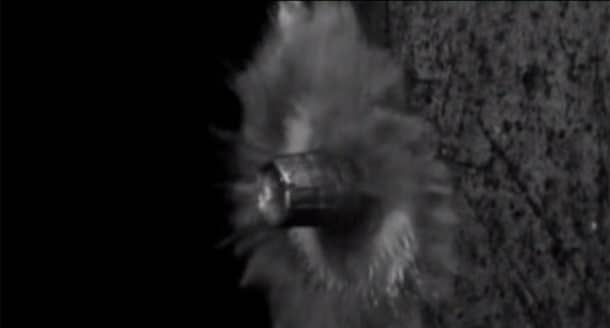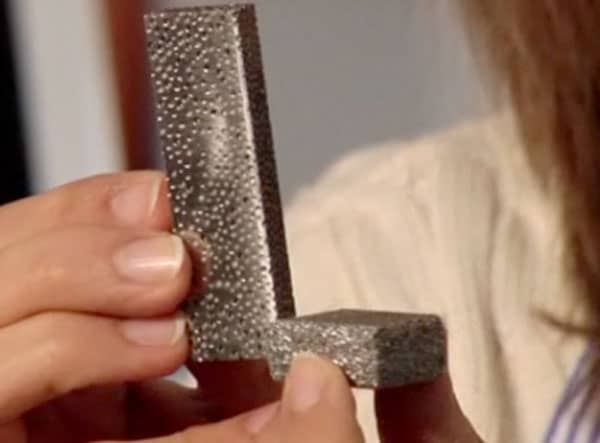Bulletproof materials have been around for as long as bullets have been. Bulletproof jacket technology has evolved so much over time that the newest ones are very light in weight and comparatively comfortable to wear. Even though these jackets save you from the fatal impacts of the bullet, yet, they still leave a bruise on the body.
Afasaneh Rabiei, a professor of mechanical and aerospace engineering at North Carolina State University, has developed a material that could revolutionize the existing bullet-proof technology. Rabiei has spent years developing Composite Metal Foams (CMFs) and analyzing their properties. Armor was made from her composite metal foams and tested. The video shows the test results where a 7.62 x 63-millimeter M2 bullet was fired according to standard testing procedures established by National Institute of Justice. Watch the video below to see what happens to a bullet when it comes in contact with the metal foam armor.
Yes, we said that the bullet turns to ‘dust’ on impact, quite literally.
Rabiei explained the success of the material in stopping bullets,
“We could stop the bullet at a total thickness of less than an inch, while the indentation on the back was less than 8 millimeters. To put that in context, the NIJ standard allows up to 44 millimeters indentation in the back of an armor.”

Source: Phys.org
The foam is made by creating a frothy mixture by bubbling gas through molten metal. The frothy mixture then sets as a lightweight matrix. This material has a strength comparable to the conventional ones while being significantly lighter.

Stopping bullets is not the only function of the metal foam. In 2015, Afsaneh Rabiei produced a foam metal shield capable of blocking X-rays, gamma rays, and neutron radiation. The material is thus, a potential alternative to heavy radiation shielding used nowadays.

Applications, like space exploration, require robust and lightweight materials capable of not only blocking radiation but also withstanding extremely high temperatures. Rabiei’s published work demonstrates that the composite metal foams can handle fire and heat twice as well as the plain metals that were used to create them. Thus the incredible, lightweight and strong composite metal foam, due to its heat-resistant and radiation blocking capabilities can have numerous applications.

In which other domains, can this metal foam be used? Comment below!


